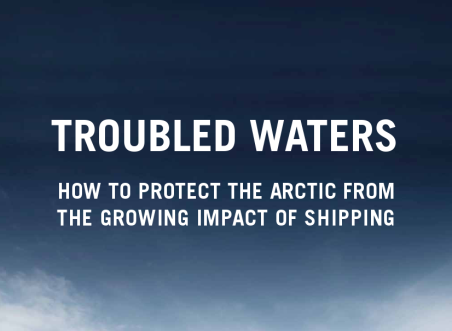
A shipping route through troubled waters?
The melting ice of the Arctic region has made the idea of a shipping route through the North Pole an increasingly realistic possibility, but this has the potential to create massive environmental problems. A group of NGOs, including T&E, has therefore put together a report highlighting the potential impact of an increase in shipping in the Arctic region.
[mailchimp_signup][/mailchimp_signup]
The opening of Arctic sea routes – the Northwest passage along the coast of Canada and the Northern Sea route in Russia – has the potential to shorten distances between Asia and North America or Europe. These sea routes could attract a significant amount of international shipping traffic, up to 10% of the total container trade between Asia and Europe by 2050 according to recent models. Without additional policies, this increase in traffic has the potential to seriously impact and damage the Arctic environment.
The report ‘Troubled Waters’ looks at increased emissions of black carbon from ships, the risk of using and carrying heavy fuel oil, and examines the potential for regulated ship speeds. It recommends a strong framework for black carbon, a ban on the use and carriage of heavy fuel oil, and a strict safety code for ships operating in Arctic waters.
There is an international agreement, the ‘Polar Code’, that is supposed to cover safety and environmental issues involving shipping in the Arctic region, but while progress has been made on safety, the environmental chapter is not expected until next year. The report calls for the environmental chapter to be completed, and also calls on the EU to play a more active role in the process, given that most ships using Arctic waters start or finish in EU ports.
T&E shipping officer Antoine Kedzierski says: ‘This year again, the Arctic sea cap has set a new record for melting, and in the very near future the Arctic may be free of ice in the summer. Arctic melting is seen by industry and some governments as an opportunity to develop human and exploitative activities in the region, such as oil and gas production, mining, shipping, tourism. But while Arctic melting is surely an effect of climate warming, it is vital it does not become another cause of climate change.’
